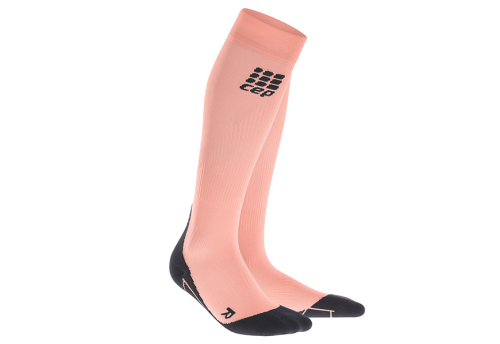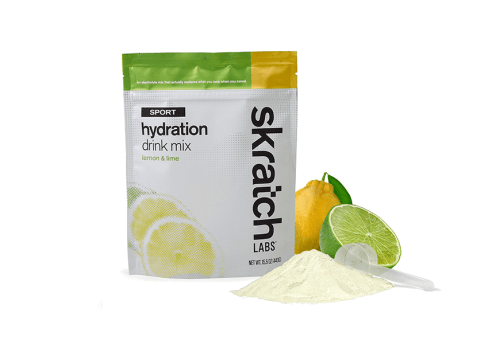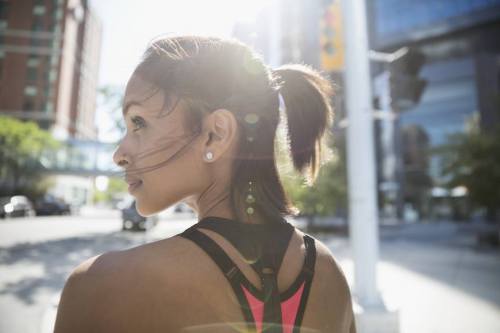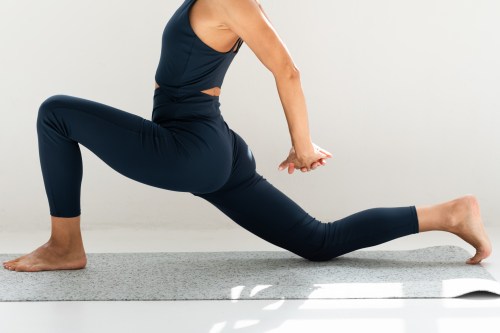I don’t exactly recall the first mile I ever ran but I do know this: It wasn’t my idea. (If I were guessing, it probably had to do with proving I was a physically fit third grader to my gym teacher for the Presidental Fitness Test.) But I do remember the first mile I chose to run on my own. I was 14 and to make the basketball team, I had to clip along at an eight-minute pace. I didn’t do it. So, the next day I set out again, and again, and again to hit this mark and somewhere along the way, the pursuit hooked me. I guess you could say that, for me, running was always about something other than the miles.
Becoming a runner felt like finding religion or falling in love and making it last a lifetime. Every route has its own fingerprint—no two are the quite the same. You can factor in things like the distance, the location, and the temperature, sure, but what I’m really talking about is the symphony that strikes up when the breeze whistles through the leaves and the sun lights up your face between the tree branches, the birds chirp, and your laces click together, and every step plants you into a multi-sensory moment that is uniquely present and forward-looking.
And of course, reminiscent as well. I’d venture a guess that for many runners, what started as a way to torch calories or make the basketball team stuck because somewhere along the way, the miles started to feel like therapy—and I’m no different.
Over the years, I’ve worked through body insecurities, job aspirations, incredibly palpable sadness over lost loved ones, and thought of the *perfect* retort for so many comebacks-that-never-were. But now? Less so. All of the reasons that I’ve had for running—mainly psychological ones—have gone by the wayside, as life has unfolded in a nice little way, and for the first time, running has truly become about the run.
So, when I limped across the finish line of the 2017 NYC marathon with a time that was an hour greater than what I’d expected, it took me only a matter of minutes (okay, okay, like a week) to realize that I wanted to join the New Balance team and run it again in 2018. Happily, with the right training, and a team that was beyond supportive (looking at you, Well+Gooders), I crossed the finish line this year with a PR and many lessons learned. Here’s what they are.

1. Your body can do amazing things, but you have to do the same for it
The number-one thing that the marathon taught me is this: Your body will do amazing things if you train it to. The flip-side of that coin? You’ve got to do it right. That starts with finding the right shoe. For me, it’s a stability model, such as the New Balance 860 v9 ($125) for overpronators (or those whose foot rolls inward when they run). You can easily find this out by going to a New Balance, wherein select stores, they have a 3D scanner that shows you the make-up of your foot. It can tell you what your foot’s needs are so that you land in the right pair for you.

2. Recovery is a non-negotiable
True life: I don’t love to stretch, and if I could, I’d probably skip out on it after every workout for the rest of for-e-ver. But when training for the marathon, it’s a non-negotiable. My too-tight Achille’s tendon needed to be foam-rolled, and Theragunned, and once all of that had happened, it needed ice and compression. In particular, these CEP Compression Socks ($60) post-workout help to boost blood flow to your legs, which helps take the edge off of 18, 19, and 22-mile training runs.

3. You have to play around to figure out what works for you
My go-to drink mix from the year past? Yeah, didn’t make my stomach feel so hot on-the-go this year. Our bodies change, as do our diets, which can mean you need to change up your fuel-source. I opted for the all-natural Skratch Sports Hydration Mix ($20) in Lemon Lime and Matcha Green Tea and Lemon, which has caffeine. Ahead of a long run, it gave me just the right amount of oomph, minus the jolt-and-drop like coffee sometimes does.

4. Your skin gets a big-time workout, too
As a part fitness, part beauty editor, I’m disciplined about applying sunscreen. I wear an SPF 50 every single day and diligently avoid the sun in the summertime…but when you’re training for upwards of three hours, you’re clocking a lot of UV rays and damage. So, I always layered on the Coola Classic Face Sport SPF 50 ($32) ahead of every run and reapplied when I was out there for more than two hours, which was frequently. No matter, when I finished the race, I was still dealing with a lot of sun damage, so I decided a hyperpigmentation-targeting photofacial was in order. These types of treatments aren’t cheap—they can run you between $300–$600, but I feel it’s worth the investment because of the long-term benefits. For mine, I went to see Adam Kolker, a New York City plastic surgeon in New York City. He suggested an intense pulsed light (IPL) treatment, which was the best option for addressing hyperpigmentation for my skin tone and sensitivity. The treatment took about 30 minutes from start-to-finish. I left a little red and with darkened spots that looked like coffee grinds. In the week following, they flecked off and helped to undo some of the training season in an easy-breezy session. Take note: Lasers make you more sun-sensitive, so you’d never want to get a treatment done mid-training season; instead, always wait until you’re taking your workout routine inside for the winter, and still follow with a high-level sunscreen.

5. You recognize that running has become your life
It’d be easy to make a joke that you spend all your time running while training for a marathon, but really, you kind of do. Training runs can last upwards of three hours (at my pace) and it’s kind of a cool thing to watch this happen. I trained with the Apple Watch ($399), which kept all of my runs (and closed rings—that’s how the watch measures your daily activity) in one spot so that it’s easy to rehash my steps when I want to go back to look at good runs—and bad ones. Because what ultimately happened along the way was that I realized something super important: I’d started off running because I needed an outlet for the things happening in my life—the stress, the loss, the excitement—all of the things that transpire when you’re becoming. What I wound up realizing is that those slow-and-steady life lessons I’ve cumulated over the years were the run, and now they whole-heartedly inform how I take each-and-every step ahead.
Also, there’s never been a better time to be a female runner and these are all of the weird running terms you may or may not know.
Sign Up for Our Daily Newsletter
Get all the latest in wellness, trends, food, fitness, beauty, and more delivered right to your inbox.
Got it, you've been added to our email list.











